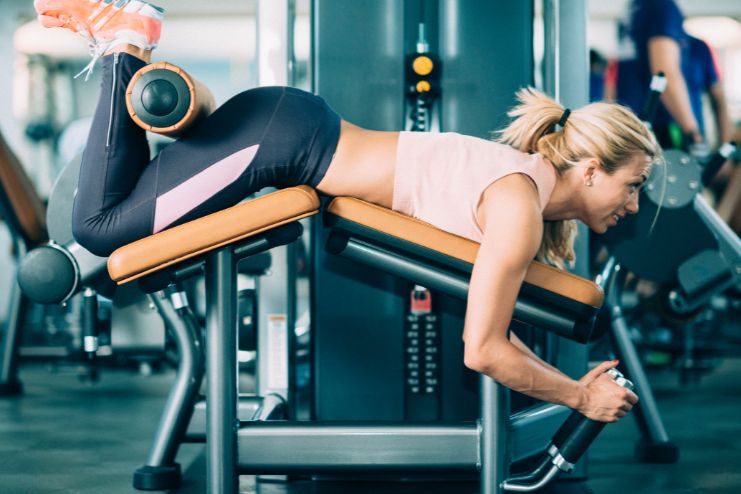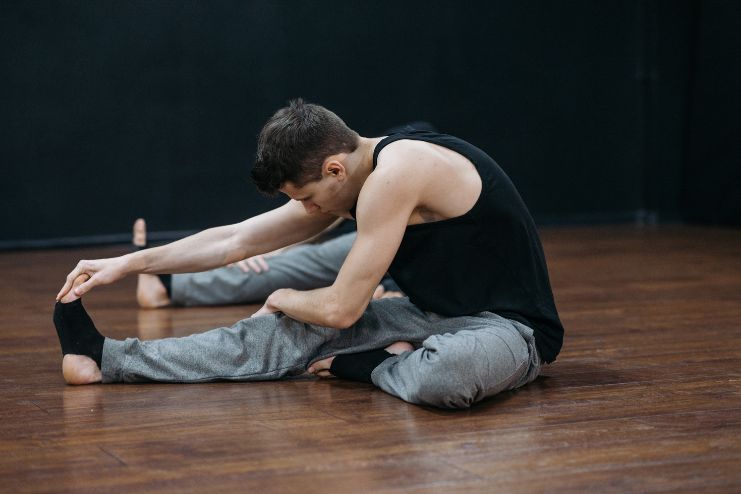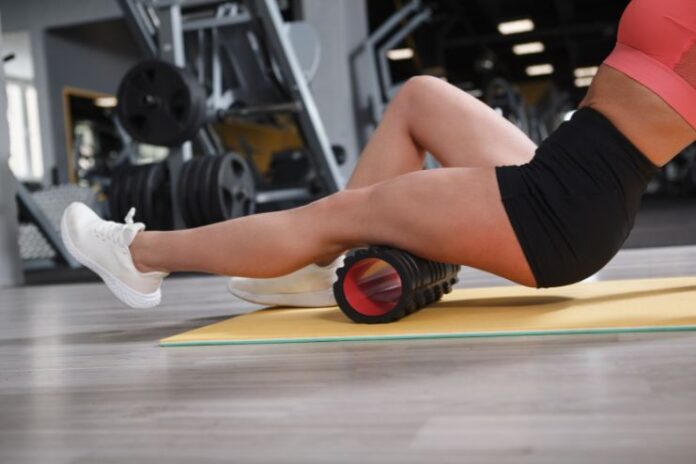Affiliate Disclaimer
Some links in this article are affiliate links. We may earn a small commission if you make a purchase through these links, at no extra cost to you. We only recommend products we find useful to our readersAmong the various hamstring exercises, one stands out for its unique approach: Nordic hamstring curls. Unlike traditional exercises, Nordic curls focus on the eccentric phase of muscle contraction—when the muscle lengthens under tension. This emphasis on eccentric strength makes Nordic curls highly effective at building stronger, more resilient hamstrings, which helps reduce the risk of injury and improve athletic performance.
Hamstring injuries are a common challenge for athletes and fitness enthusiasts, often leading to setbacks that can significantly affect performance. These injuries, involving strains or tears in the muscles at the back of the thigh, can affect everything from speed and agility to overall lower-body strength. As a result, finding effective ways to strengthen and protect the hamstrings is crucial for anyone looking to maintain peak physical performance.
In this article, we’ll explore why Nordic hamstring curls have become a go-to exercise for athletes and fitness enthusiasts alike, how they differ from other hamstring exercises, and why they’re regarded as essential for anyone serious about lower-body strength and injury prevention. We’ll also dive into the different variations of Nordic hamstring training and how to progressively increase the intensity as your strength improves.
The Science Behind Nordic Curls
Nordic Curls are a highly effective bodyweight exercise that target the hamstrings through eccentric contractions, where the muscle lengthens under tension. Unlike concentric training, which focuses on muscle contraction and shortening (as in traditional leg curls), eccentric training emphasizes controlled lengthening. This makes Nordic Curls particularly effective for building muscle strength, tendon resilience, and improving flexibility.
Eccentric training helps engage more muscle fibers, contributing to long-term strength gains and enhanced knee joint stability. By strengthening tendons and improving lower-limb mobility, Nordic Curls also reduce the risk of injury, making them a powerful exercise for overall lower-body health.
Muscles Worked
Nordic Curls primarily target the hamstrings, specifically the biceps femoris, semitendinosus, and semimembranosus, which are essential for knee flexion and hip extension. While the hamstrings do the heavy lifting, other muscles like the glutes, lower back, and core also engage to stabilize your body during the movement. This makes Nordic Curls a great exercise for strengthening the entire lower body and core.
Advantages of Eccentric Training for Hamstrings
Focusing on the eccentric phase of Nordic Curls forces the hamstrings to work more intensely in a controlled manner, engaging more muscle fibers than traditional concentric exercises. This leads to increased strength, improved flexibility, and enhanced tendon resilience, which reduces the risk of strains and tears.
For athletes, especially those involved in sprinting or explosive movements, Nordic Curls can enhance sprinting speed, power, and overall lower-body performance, making them a valuable tool for injury prevention and athletic development.
READ MORE: 10 Lying Leg Curl Alternatives: Make Your Knees Stronger
Benefits of Nordic Curls
Nordic curls offer a ton of benefits that can seriously level up your workout routine, especially if you’re looking to build stronger hamstrings and reduce the risk of injury. Here’s a breakdown of why they’re so effective:
- Injury Prevention: Nordic curls are a go-to for injury-proofing your legs. They strengthen your hamstrings and the rest of your posterior chain, which helps balance your muscles and protects you from those common hamstring strains and tears. This exercise is like insurance for your legs, making sure you stay injury-free when you push yourself.
- Stronger, More Explosive Hamstrings: Strong hamstrings are crucial for explosive movements like sprinting, jumping, and quick cuts. Nordic Curls build endurance and power in these muscles, boosting performance in sports like football, soccer, and basketball, where agility and speed are key.
- Boosted Athletic Performance: Athletes at the top of their game—whether it’s on the track, field, or court—swear by Nordic curls. They help keep your hamstrings strong and flexible, allowing you to hit your peak performance and stay there. Nordic curls aren’t just for injury prevention; they’re about pushing your performance to the next level.
- Better Muscle Balance & Joint Health: By focusing on the posterior chain, Nordic curls help balance out the muscles between the front and back of your body. This can relieve stress on your knees and lower back, which means fewer aches and pains and better overall movement. Stronger hamstrings also mean your joints stay healthy and happy.
- Minimal Equipment Required: Unlike those bulky gym machines, Nordic curls don’t need much equipment. A partner or a sturdy anchor point is all you need. This makes them quite accessible whether you’re at the gym or working out at home.
- Flexibility and Range of Motion: Nordic curls not only make your hamstrings stronger but also improve your flexibility and range of motion. That means fewer strains, better movement, and an overall stronger, more agile body.
- Rehabilitation-Friendly: If you’ve had a hamstring injury, Nordic curls are great for rebuilding strength and helping you recover faster. They’re also perfect for maintaining flexibility and function during rehab.
Other Awesome Benefits:
- Improve balance, coordination, and agility
- Strengthen your entire posterior chain (glutes, lower back, and more)
- Reduce the risk of delayed onset muscle soreness (DOMS)
Now that you understand Nordic curls and the bundle of benefits they bring along, are you wondering how to do them? The right way, of course? Let’s dive into how you can start performing this game-changing exercise and unlock all the power it offers.
READ MORE: Daily Stretching Exercises for Flexibility and Mobility
How to Perform Nordic Curls Correctly
Here’s how to ease into mastering the Nordic Curl. It might seem a little tricky at first, but with consistent practice, you’ll feel your hamstrings getting stronger and your form improving. Nordic curls are all about control, so don’t rush it! The key is to lower yourself slowly and safely.
Step-by-Step Guide
Let’s break down how to perform them step by step:
- Set Up: Get on your knees on a soft surface and make sure your feet are locked under something sturdy—whether it’s a barbell, a resistance band, or a partner holding you down.
- Engage Your Core: Keep your body in a straight line from your head to your knees. Tighten your core—no sagging or arching!
- Lower Slowly: Start to lean forward, using your hamstrings to control the movement. The slower you go, the better.
- Catch Yourself: Once you can’t hold the position anymore, catch yourself with your hands before you fall flat.
- Push Back Up: Push yourself back to the starting position with your hands, or if you need a bit of help, use a resistance band or have your partner give you a lift.
Common Mistakes & How to Avoid Them

When doing Nordic curls, a few common mistakes can sneak in and make the exercise less effective or even lead to injury. But don’t worry—avoiding them is easy once you know what to watch out for! Here’s how to make sure you’re nailing your form every time.
- Arching the Back: It’s easy to accidentally arch your back during Nordic curls, but this reduces the effectiveness of the exercise. Keep your core tight and maintain a straight line from your head to your knees throughout the movement. This keeps your spine neutral and your hamstrings working hard.
- Dropping Too Fast: The goal here is control! If you lower yourself too quickly, you miss out on that all-important eccentric loading. Slow and controlled movement is essential for maximizing hamstring activation. Focus on resisting gravity as you lower yourself down.
- Not Activating the Hamstrings: Your hamstrings should be doing most of the work, but if you’re not focused, other muscles might take over. Ensure you’re squeezing your hamstrings throughout the entire range of motion for maximum benefits.
- Bending at the Hips: If you bend at the hips instead of keeping your body in a straight line, you’re missing out on hamstring activation. Engage your core and keep your torso aligned with your legs from start to finish.
- Improper Foot Anchor: Your feet need to be securely anchored, or you’ll feel unstable and risk injury. Make sure they’re locked in tight under a sturdy object (or use a NordStick for extra stability).
- Rushing Through the Movement: Performing Nordic curls too fast won’t give your hamstrings the full challenge they need. Take it slow, especially on the way down, to engage your muscles.
- Overreaching Too Soon: Jumping straight into full Nordic curls without enough strength can strain your hamstrings. Start with isometric holds or partial curls and work your way up as you get stronger.
- Lack of Focus: Losing concentration during the lowering phase can lead to a sloppy form or injury. Stay focused, control your descent, and keep your hamstrings engaged the entire time.
- Skipping the Warm-Up: Nordic curls put a lot of stress on your hamstrings, so warming up is a must. Failing to warm up properly can lead to painful tendinopathy. Take time to stretch and activate your hamstrings before jumping in.
Progressions & Modifications

When it comes to Nordic curls, not everyone starts at the same level of strength, and that’s perfectly fine. Whether you’re a beginner or aiming to elevate your hamstring training, there are ways to progress and modify the exercise to suit your current ability. Here’s how you can break it down based on your fitness level:
For Beginners: Start here if you’re new to Nordic curls or have weaker hamstrings. These modifications will help you build strength gradually:
- Use assistance: Try assisted Nordic curls with resistance bands or have a partner provide support.
- Partial range of motion: Lower yourself only partially, catching yourself as soon as you lose control.
- Focus on control: Prioritize slow, controlled movements to develop strength without overloading the hamstrings.
Intermediate Level: If you’ve built a solid strength foundation, the next step is to slow down the movement and intensify the challenge on your hamstrings.
- Minimize assistance: Slowly reduce the amount of help you get from bands or a partner.
- Increase descent depth: Gradually lower yourself further while still maintaining control.
- Slow eccentric phase: Focus on an even slower eccentric (lowering) phase to challenge the hamstrings more effectively.
Advanced Level: Ready for the ultimate hamstring challenge? At the advanced level, Nordic curls become a full-range, high-resistance exercise.
- Full-range curls: Perform Nordic curls with a full range of motion, lowering yourself completely and pushing back up with control.
- Add weight: Use a weighted vest or resistance bands to increase the challenge.
- Play with tempo: Slow down the movement or add more reps to push your endurance and strength.
How to Integrate Nordic Curls Into Your Training Routine
Nordic curls are an excellent tool to improve your lower-body strength and build bulletproof hamstrings, but incorporating them correctly into your routine is crucial. Whether you’re a beginner or an experienced athlete, Nordic curls can complement your training when added thoughtfully. Let’s look at the key components for integrating them effectively into your routine.
Ideal Frequency
When it comes to Nordic curls, consistency is key, but that doesn’t mean you need to do them every day. Giving your muscles time to rest and recover between sessions is just as important as the exercise itself. Here’s how to balance your workouts with the right frequency.
- Start with 2–3 sessions per week to build strength and prevent overtraining.
- Make sure to space out your workouts to allow for muscle recovery between sessions.
- Listen to your body and adjust based on how sore you feel post-workout.
Reps & Sets
When first starting Nordic curls, you don’t need to go all out. Begin with controlled reps to perfect your form, and then gradually increase the challenge. Focusing on slow, quality movements will yield much better results than rushing through the exercise.
- Aim for 3–5 sets of 3–6 controlled reps per session.
- Focus on slow, deliberate movements to engage your hamstrings fully.
- As your strength improves, you can increase reps and sets or even add resistance to keep progressing.
Best Workouts to Pair with Nordic Curls

Nordic curls work well when combined with other exercises that target your hamstrings, glutes, and lower body. Integrating them with strength and agility workouts can help you maximize your gains in power, speed, and injury prevention. Let’s explore some of the best workout pairings.
- Strength training: Exercises like deadlifts, Romanian deadlifts, and squats complement Nordic curls well for a balanced lower-body routine.
- Speed and agility training: Nordic curls improve your hamstring strength, helping you sprint faster and move more explosively.
- Rehab or prehab routines: If you’re looking to prevent injuries or are recovering from a hamstring strain, Nordic curls are an ideal addition to your routine.
READ MORE: Strength Training for Longevity: Best Workouts
Safety Tips
Nordic curls can be intense on your hamstrings, so it’s important to prioritize safety as you build strength. Always listen to your body and prioritize good form over pushing through discomfort. Following these tips will help you stay safe while progressing.
- Don’t push through pain; if something feels off, take a break and reassess.
- Focus on form: It’s better to do fewer reps correctly than to rush through with poor technique.
- Gradually increase intensity and range of motion to avoid injury.
By gradually incorporating Nordic curls into your routine, pairing them with complementary exercises, and staying mindful of your form, you’ll be able to unlock the full benefits of this powerful hamstring exercise. Whether you’re looking to boost athletic performance or simply prevent injuries, Nordic curls are a valuable addition to any workout program.
Complementary Exercises
Nordic curls aren’t the only hamstring exercise out there. Pairing them with other lower-body moves will help you build balanced strength and reduce the risk of injury. By mixing in a few complementary exercises, you can develop all-around lower-body power.
- Glute-ham raises and stability ball hamstring curls are excellent for building hamstring strength and endurance.
- Add hip thrusts or glute bridges for a complete lower-body workout that also hits your glutes and core.
- Incorporating band-assisted Nordic curls can also be helpful for beginners or those working on improving their form.
Conclusion
Nordic curls are one of those exercises that can transform your training routine. Whether you’re aiming to strengthen your hamstrings, improve your athletic performance, or just prevent injuries, they pack a serious punch. The best part? You don’t need a lot of fancy equipment—just some dedication and patience. By starting slow, focusing on good form, and doing them 2-3 times a week, you’ll gradually notice a big difference in your hamstring strength and overall lower-body stability.
Pair them with exercises like deadlifts or squats, and you’re well on your way to a stronger, more resilient lower body. Just remember to take it at your own pace, listen to your body, and enjoy the process. So, if you haven’t yet, give Nordic curls a try—you’ll thank yourself down the road!
Now that you know the secret to bulletproof hamstrings, it’s time to put it into practice!
References
- Mastering Nordic Curls: A Comprehensive Guide to Optimal Strength Using a GHD Machine
- How to Set Up, Perform, & Program Nordic Hamstring Curls
- Your Ultimate Guide to Nordic Curls for Runners
- The Benefits of Nordic Curls: A Must-Have in Your Workout Routine
- The Effects of Eccentric Training on Hamstring Flexibility and Strength
- The Science Behind the Nordic Curl
- Nordic Hamstring Training
In this Article

















